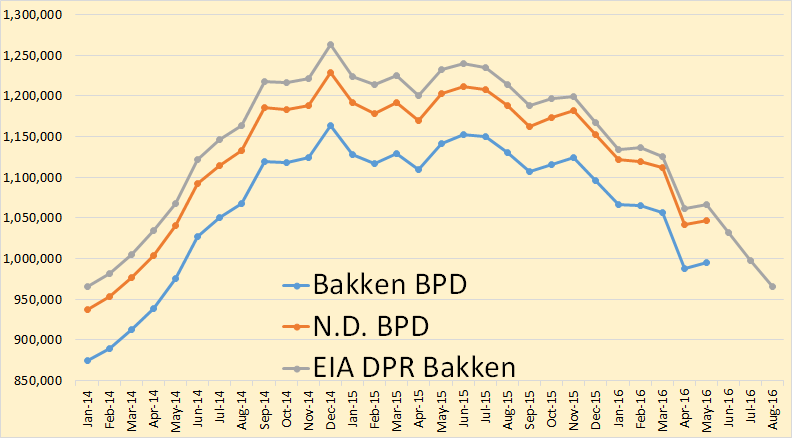Comments and news about oil and natural gas.
World C+C using EIA data, but substituting the Russian Ministry of Energy Data for Russia shown in the chart below. The monthly peak was 81, 047 kb/d in Nov 2015. The centered 12 month running average is also shown with a peak at 80,642 kb/d in Sept 2015. The annual decline rate since the Nov 2015 peak has been 4.2% per year or about 3.4 Mb/d over a 12 month period if the rate does not change before Nov 2016. That would imply 77.6 Mb/d by Nov 2016.
Output was 79,784 kb/d in April 2016, I believe the decline rate will decrease by Oct and output will be around 78.5 +/- 0.5 Mb/d in Nov 2016, decline will continue into 2017 and the rate of decline may reach zero some time in 2017.
http://www.eia.gov/totalenergy/data/monthly/index.cfm
http://minenergo.gov.ru/en/activity/statistic


